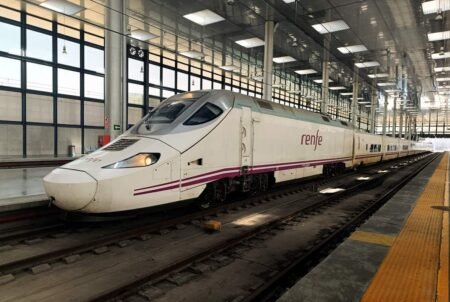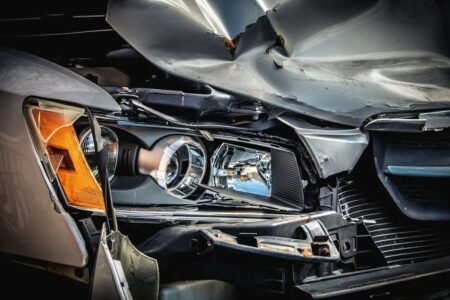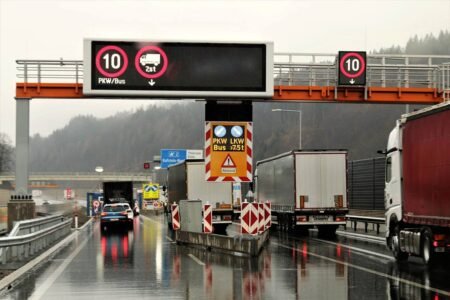The European Commission adopted on 13 March new rules stepping up the deployment of Cooperative Intelligent Transport Systems (C-ITS) on Europe’s roads.
Advertisement
Cooperative Intelligent Transport Systems (C-ITS) connect all road users and traffic managers so that they may share and use information in real time. This allows the coordination of actions at an entirely new level. As of this year, vehicles, traffic signs and motorways will be equipped with technology to send standardised messages to all traffic participants around them.
I am a driver, how will this affect me?
Cooperative Intelligent Transport Systems will make traffic safer and more efficient for you and those around you. In the beginning, this will be in the form of simple information services, for instance alerting you of a traffic jam or road works that you cannot yet see, or informing you of the right speed to go so that the next traffic light is green. However, the same technology could be used for additional services, for instance to inform you about real-time traffic and parking conditions, or to warn of nearby pedestrians and cyclists. C-ITS developers have already made a roadmap for around 200 additional services.
When will it be available and how much will it cost?
Vehicles equipped with Cooperative Intelligent Transport Systems are already on the road today, albeit in limited numbers, demonstrating that the technology is effective and reliable. In 2019, vehicle manufacturers across the EU are expected to start equipping their vehicles, and road operators to start equipping their roads with C-ITS technology.
Cooperative Intelligent Transport Systems technology will normally be directly integrated into the vehicle. The total costs per car are estimated to be around 300, which is expected to drop as more vehicles are equipped. Some vehicle manufacturers may offer the technology as standard safety equipment.
What are the benefits of these specifications?
These specifications set out the rules to make sure that all Cooperative Intelligent Transport Systems stations can communicate with one another, now and in the future. This will make services accessible across the EU, while supporting further technology development. The law does not make C-ITS mandatory, so the decision to use it remains with users, vehicle manufacturers and road operators.
Which communication technologies are concerned?
The specifications foresee use of complementary technologies, offering different advantages: low-latency for safety critical services, and high coverage using existing cellular networks. While the current decision includes detailed specifications for mature Intelligent Transport Systems-G5 (ITS-G5) technology for safety related services, additional technologies may be integrated.
What is the Commission doing to protect the data of connected vehicles?
For Cooperative Intelligent Transport Systems to work effectively, road users need to be aware of each other’s movements at all times. Thus C-ITS will frequently send information to other nearby vehicles (up to 1 km away). To limit the amount of personal data sent, these data are limited to what is necessary and do not include the driver’s identity, nor that of the vehicle; a pseudonym is used instead, so others cannot identify you. Therefore, the new rules will also make C-ITS communications cyber secure and trusted. Drivers are kept informed of the data processing and the Cooperative Intelligent Transport Systems station can be turned off at any time.
How does this help prepare for driverless vehicles?
Driverless and not-driverless vehicles can benefit of the C-ITS services, as they enable the connectivity of cars. With C-ITS a self-driving or a normal vehicle will be informed that there are vehicles around it, even if not immediately visible. Building on this experience, more advanced services will be developed in the future for instance to support self-driving vehicles to overtake efficiently or merge lines safely.
The Commission has presented in May 2018 a dedicated Communication on connected and automated mobility. One deliverable of the Communication is to ensure proper approval of automated vehicles. Today automated driving is not foreseen by EU vehicle rules. To allow national authorities to nevertheless type-approve automated vehicles, the Commission has therefore worked together with Member States on guidelines. Type-approval of automated vehicles is now permitted with an EU exemption procedure in the period until EU rules have been adopted.
The Commission has also proposed in May 2018 that cars, trucks and buses be equipped with new and advanced safety features, such as emergency braking, intelligent speed assistance and enhanced pedestrian and cyclist protection (see full list here). The features are an enabler of automated mobility, promising EU industry leadership in this important area. Negotiations by co-legislators on this proposal will start tomorrow.
Source: European Commission







